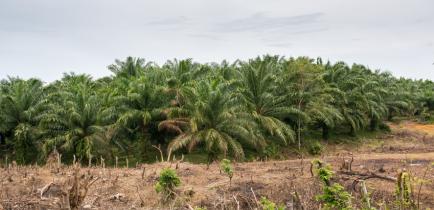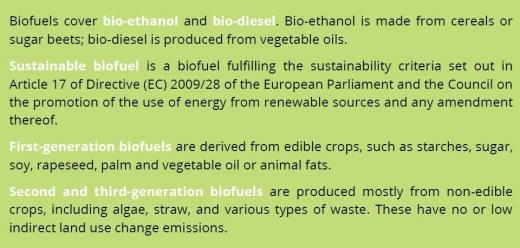Issues:
Sectors:
Keywords:
1. International deforestation
Deforestation is the removal of trees that may occur for various reasons. According to the United Nations Framework Convention on Climate Change (UNFCCC) secretariat, the overwhelming direct cause of deforestation is agriculture. Subsistence farming is responsible for 48% of deforestation; commercial agriculture is responsible for 32%, logging for 14% and fuel wood removals make up 5%1.
The removal of trees without sufficient reforestation has resulted in damage to habitat, biodiversity loss and aridity. It has adverse impacts on biosequestration of CO2. Deforestation causes extinction of species, changes to climatic conditions, desertification, and displacement of populations.
According to the Intergovernmental Panel on Climate Change (IPCC), tropical deforestation is responsible for approximately 20% of world greenhouse gas (GHG) emissions, it releases 1.5 billion tons of carbon each year into the atmosphere - causing climate change2. This is because in deforested areas, the land heats up faster and reaches a higher temperature, leading to localized upward motions that enhance the formation of clouds and ultimately produce more rainfall. Reducing emissions from deforestation and forest degradation (REDD) in developing countries has emerged as a new potential to complement ongoing climate policies. The idea consists of providing financial compensations for the reduction of GHG emissions from deforestation and forest degradation.
2. Do biofuels contribute to deforestation?
In the early 2000’s biofuels were seen as one among many solutions to climate change. However, further research has increasingly argued that many biofuels may actually emit more GHG than fossil fuels due to deforestation and land use change. In addition, deforestation linked to biofuels in Europe has led to biodiversity loss, land conflict, labor issues, and indigenous right issues in places as far away as Indonesia, Brazil, and Tanzania3.
Critics indicate biofuels not only compete with feeding a growing global population but also contribute to deforestation because some of these crops require a great amount of land, so forested areas may be cut down or burned to make way for agricultural expansion3.
Some of these crops have a low energy return. Soy and rapeseed, for instance, produce only 500 to 1000 litres of biodiesel fuel per hectare, meaning the life-cycle production and transport emissions in some cases exceed those of traditional fossil fuels4. These are so-called 'first-generation biofuels' - those derived from starches, sugar, soy, animal fats, palm and vegetable oil.
Currently, research also focuses on biofuels with no or low indirect land use change (iLUC) emissions. These are mostly non-edible crops, so-called 'second' and 'third-generation biofuels' produced from feedstock that do not create an additional demand for land, including algae, straw, and various types of waste.
Gao et al. review the methodological difficulties in estimating the relationship between biofuel development and tropical deforestation in detail5. They argue it is difficult to detect direct links and to quantify these at the global level, due to limited data availability. These limitations include:
- lack of time series data on deforestation at sufficient resolution at global scale;
- lack of information on the geographical location of biofuel cultivation areas;
- much of the deforestation related to biofuel cultivation being indirect through displacement of other agriculture;
- much of the biofuel cultivation being very recent; and,
- that many biofuel feedstocks are multipurpose – biofuels often represent only a small proportion of larger food and food production systems.
Combined, these difficulties make it currently almost impossible to quantify the relationship between biofuel production and deforestation and to map it at the global levelv. iLUC is of particular concern, which refers to the fact that biofuel development often unintentionally pushes deforestation into new areas, and it can take effect in neighbouring regions or across the globe. Indirect effects of biofuel production are likely to increase; although several studies have been carried out, no estimation method has yet been accepted5. The rate of biofuel expansion will depend on many other factors, including land availability, enabling national government policies and foreign direct investment, as well as policy at an international level.
3. Recent developments in the European biofuels sector
In October 2012, the European Commission (EC) published a proposal6 to minimise the climate impact of biofuels, by amending the legislation on biofuels through the Renewable Energy Directive and the Fuel Quality Directive.
In September 2013, a narrow majority of the members of the European Parliament (MEPs) voted that first generation biofuels should not exceed 6% of the final energy consumption in transport by 2020, while advanced biofuels should represent at least 2.5% of energy consumption in transport by 2020.
The ongoing uncertainty in European biofuels policy deterred investment in the industry, making it harder for plants to secure the funding needed for commissioning7.
In April 2014, the EC introduced new guidelines on state aid for environmental protection and energy, including renewable energy and biofuels. Investment aid to biofuels can only be granted in favour of advanced biofuels and should be limited to ‘sustainable biofuels that are too expensive to come on the market with a supply or blending obligation only.
On 28th April 2015, the European Parliament voted a new cap on biofuels derived from edible crops – such as palm oil, corn, rapeseed, and soy – at 7% because a number of studies have suggested many biofuels are actually more polluting than the fossil fuels they are designed to replace when iLUC emissions are accounted for. This new legislaton, so-called the iLUC Directive limits the way Member States (MSs) can meet the target of 10% for renewables in transport fuels by 2020.
MSs must then include this Directive in their national legislation by 2017, and will have to set a national target, no later than 18 months after the Directive enters into force, for advanced biofuels, e.g. sourced from certain types of waste and residues and new sources such as seaweed. The draft legislation sets an indicative target of 0.5% for the share of energy to be produced from advanced biofuels as a percentage of the energy derived from renewable sources in all forms of transport by 2020.
Under the new legislation, biofuel companies will not have to take into account GHG emissions from iLUC, however, companies will have to estimate emissions from iLUC and report it to the EC in a bid to improve transparency.
The final iLUC directive is a first step towards a stable and consistent framework for biofuels in Europe.
4. Conclusion
We may conclude that the impacts of biofuels on deforestation are being shaped by countries’ political and institutional frameworks and socioeconomic settings. Effects also depend greatly on the particular feedstock used. The POLIMP experts urge for new research focusing on the potential impact of second generation lignocellulosic biofuels on deforestation to better understand the relationship between biofuel development and deforestation, and associated social and environmental impacts.

